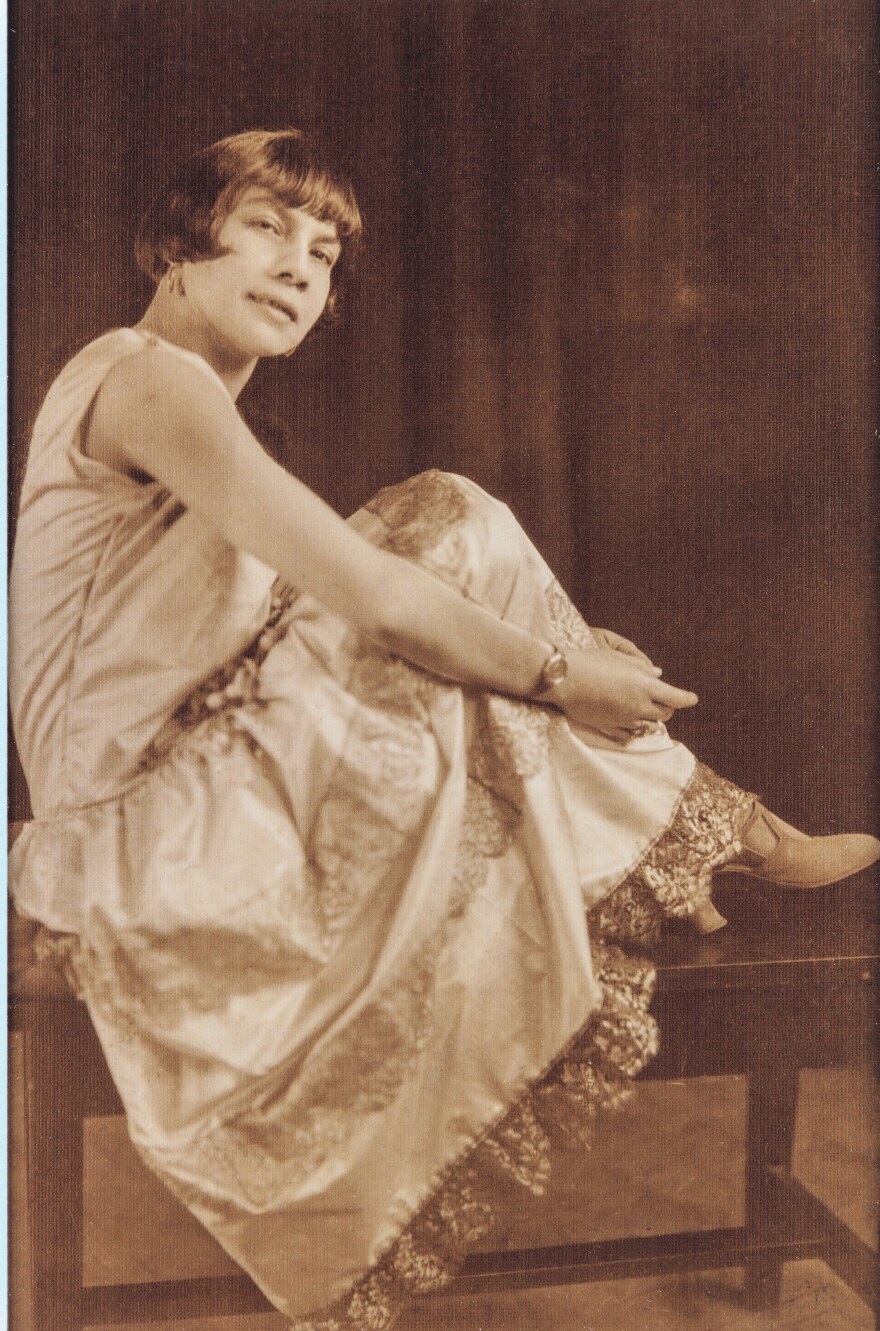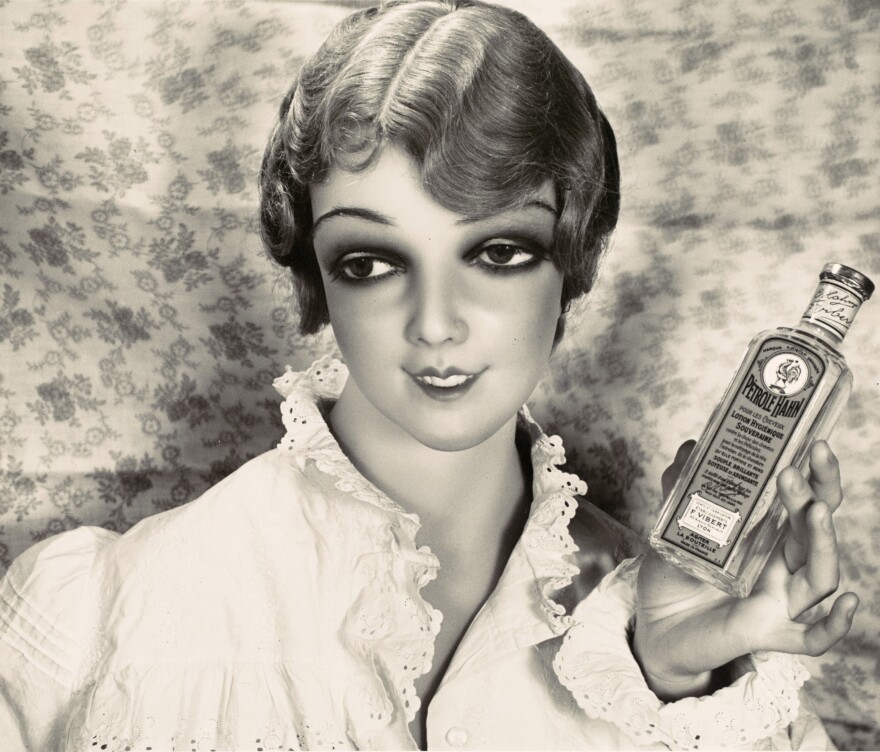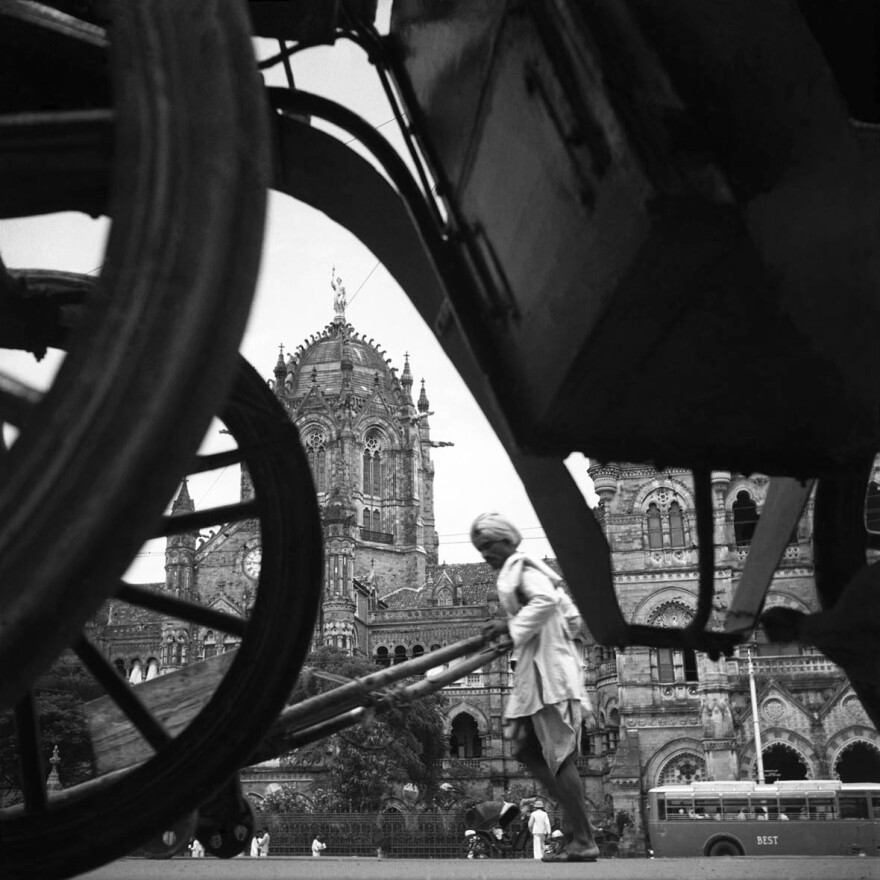Would you buy a headband from this woman? Lee Miller took the picture for a fashion article. A pretty woman could sell lots of headbands to avid photo magazine readers. And Lee Miller (1907-1977) was certainly pretty.
A model, photographer, muse and lover to surrealist Man Ray, lover (maybe muse, too) to many more men than Man, photojournalist, accredited war correspondent for Vogue, Lee appears, in profile with headband, in two current museum exhibitions: The Woman Who Broke Boundaries at the Dali Museum in St. Petersburg, Fla., and The New Woman Behind the Camera at the Metropolitan Museum of Art in Manhattan.
I asked Peter Tush, Curator of Education at the Dali Museum, what would have happened to Miller if she hadn't been so gorgeous.
"We wouldn't be having this conversation," he answered.
Lee Miller had looks — but she was also a fine photographer
Miller's beauty opened many doors. But it wasn't her only advantage. She was smart, witty, extremely self-confident, up for adventure, reckless, restless. And a pal of Picasso's.

Lee met him in Paris through Man Ray, as she met so many leading artists in his circle. (Her portraits of some are featured in the Dali Museum show.) Covering World War II for Vogue, Lee tracked down Picasso as the Allies liberated Paris. She broke the story that he was alive, to the relief of the world's art lovers.
"This is extraordinary," Picasso said on seeing her. "The very first allied soldier I find is a woman, and it's you." He painted her portrait six times.
A few of Miller's war photographs are in the Met show, The New Woman Behind the Camera. It's a scan of pictures from the 1920s through the 1950s by 120 women from more than 20 countries. Lee's 1945 photos of Dachau concentration camp prisoners, a dead S.S. guard, the rubble of war, are haunting. "She was really good," says Mia Fineman, who installed the New Woman exhibit at the Met (more on that show further down.)
Curiously, especially now when scholars are paying attention to Miller's work as well as her looks, the wartime image I find most compelling shows her nude (a state of undress she often sported in self-portraits), and was taken by a Life magazine photojournalist she was traveling with. It's really worth your clicking here to see — scroll down for more of her powerful — and often disturbing — war pictures.)
The New Women take their place behind the camera
Miller was the quintessential New Woman, as were the photographers in The New Woman Behind the Camera in New York. Andrea Nelson, who organized the show at its next destination, the National Gallery in Washington, says these new women were independent, competent, and — especially in the 1920s — found themselves in a moment when they were fighting for, then winning the right to vote, "and had really started examining their lives, their marriages and children." They were also exploring what it meant to be professional photographers. "It was a time when photography was replacing drawings in all the magazines," says Nelson. And women could sell their advertising and fashion pictures readily.

In those years before cell phones, people went to commercial photo studios to have their pictures taken. In the early '20s, Florestine Perrault Collins set up her own studio in New Orleans. Collins was African American and sometimes passed for white to get training at white-owned studios. In the studio she eventually opened, most of her customers were Black and Creole.
How confident Mae looks, in a grounded, come-hithery way. No sit-up-straight ladylike pose for her. "A real '20s New Woman," says curator Nelson.
And what about this Miss:

Creepy, no? Ellen Auerbach and Grete Stern ran the Ringl and Pit ad agency in Berlin in the '20s and '30s. This is their ad for Pétrole Hahn, a hair goop. Their perfect New Woman mannequin has a nicely marcelled hairdo, waved into place with goop. She's dressed in a flouncy blouse and, poking out of one sleeve, a real hand (one of the partner's), holds the precious Pétrole.
A picture that's decades old, and yet so modern
The last image in this essay (so hard to pick just a handful from this ambitious exhibit) is from the early 1940s.

The picture captures a scene you could see today in India. The British started building this Victorian Gothic Terminus in 1878 and it still stands in the city that's now called Mumbai. But "this is such a modern picture," says curator Andrea Nelson. The way photographer Homai Vyarawalla plays with focus, angles, dimension. "The old station in the background and in front, a carriage pushed into the foreground as a frame, enclosing people, a bus, a pushcart." The photographer first sees what we see, and then uses the camera to shape how she wants us to see it.
Often we say certain paintings are timeless — speaking to us through the ages. It's rare to think of photographs — those quick decisive moments — that way. But the great ones — like many in these two exhibitions — leap over decades to present our eyes with fresh and lasting experiences.
Art Where You're At is an informal series showcasing offerings at museums you may not be able to visit.
Copyright 2021 NPR. To see more, visit https://www.npr.org.



